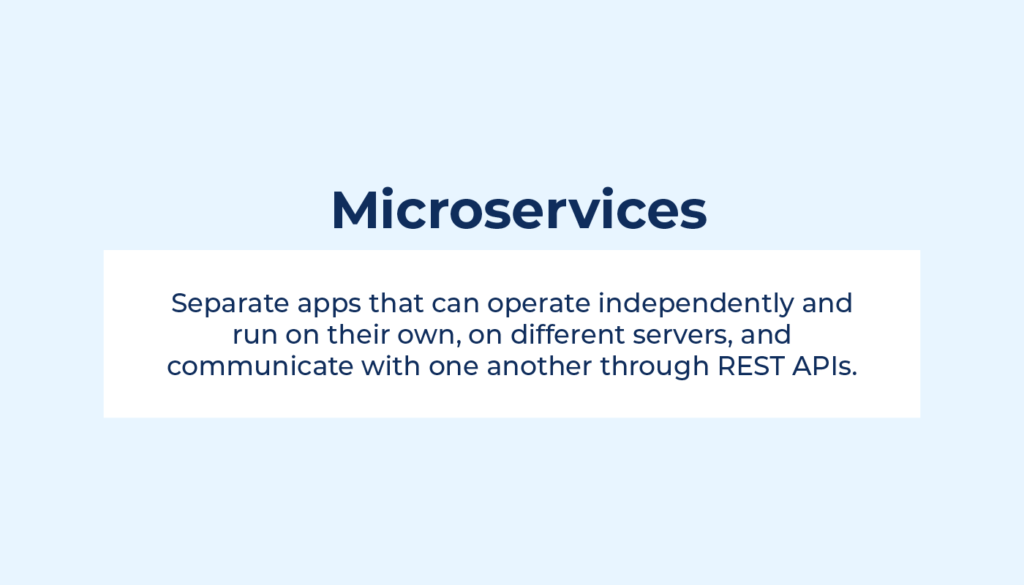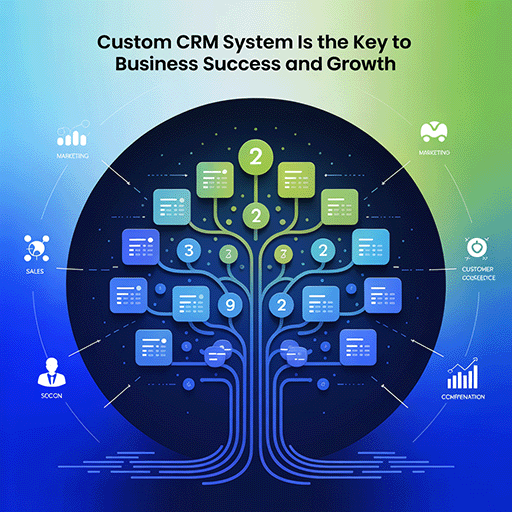Microservices are all the rage right now, and if you only want to know how to build them with the help of Micronaut, jumpstart here. Otherwise, before we jump into the nitty-gritty of building microservices with the Java microservice framework, let’s have a quick crash course on the history of software development and why microservices are better than monolith architecture.
How It All Started
When gigantic computers used to take up the whole space in a large room, this colossal machine performed all the computation. A person would give instructions to it, and the computer would eventually provide the person with the result.
Later, Bill Gates’ “a computer on every desk and in every home” became a reality. Instead of the giant machine, a more miniature desktop computer took its place, where you could have various computation programs. A developer would create an app, such as Microsoft PowerPoint, and install it on the computer to perform all the required tasks.
Types of Development
Traditional Development
So how did all this influence the way we write applications? In traditional software development, we have to start a new code project to create a new app. If we want to expand the app by adding some new features, we need to make changes directly to the whole codebase. Crudely speaking, we add new functions by expanding the existing code. What we get as a result is a large code project. And you may have a dozen of such applications that have to be expanded, making the traditional application development a grueling task.
Modular Development
To alleviate the burden of traditional software development, modular app development was used for making the process more coherent by adding code into modules and not into the whole codebase.
Such modules could be used for multiple purposes. For instance, you could add them to another project. Still, modular software development didn’t help much. In the end, you use modules to create a single application, and then you deploy the app on the desktop machine. As a result, you get a large codebase with lots of modules.
What’s Next
But when web apps started to appear, people began to deploy them on a server, and then directly on a computer. It made things much more straightforward — the user could access an application now from their device using a browser. And it became clear that there was no significant change in how applications were built and deployed.
There was no need to deploy a web application to desktop computers. Instead, the app would be deployed to a server. Still, it did not resolve the problem. We still had the same code base, which is now deployed on a server and not to the user’s machine.
As time passed, it became pretty apparent that web applications have become more and more sophisticated, complex, faster, and scalable. They can now do almost anything we need them to do — CRM systems to provide a holistic customer journey or apps to deliver a pizza to our place, whatsoever. Such complex applications require efficient handling from the coding side as well as the app execution side.
Monolithic Architecture
When we talk about the single codebase deployed on a server or user machine, we usually apply the term “monolithic architecture.” In the dictionary, by Merriam-Webster, we can find a clear definition of “monolithic” that can be ideally used to “constituting a massive undifferentiated and often rigid whole.”
This traditional type of software development comes with a few drawbacks: difficulties in deploying large apps, grueling testing processes before the deployment, issues in the application’s scalability, etc.
What’s a Microservice?
So can we get away with all these disadvantages of monolithic architecture? Instead of a single monolithic application deployed on a server, we could have several applications deployed on several servers that “communicate” with each other. Such an approach would eliminate the drawbacks of traditional architecture — we can apply changes only to the needed applications instead of the single app. These applications are technically microservices — you create separate apps that can operate independently and run on their own, on different servers, and communicate with one another through REST APIs.

What is Micronaut?
Micronaut is a lightweight JVM-based framework used for creating modular applications and microservices for the cloud. It’s used for building serverless apps, low-memory microservices, and microservices that are easy to test. The framework was created by the company behind the creation of Grails, the Groovy-based framework.
How to Build Microservices with Micronaut
Microservice architecture gives companies and developers considerable flexibility. A development team can use the tools and frameworks they found more convenient and suitable for this software project. Creating small applications implies that the team is not restricted to the same programming language across the board, and it’s free to choose the language they find more suitable for each app.
There are quite a few frameworks that can be used to create microservices for the cloud, and one of the latest frameworks created for this purpose is Micronaut. With Spring, one of the best Java microservice frameworks, becoming more and more robust, it started to eat out too much of the system’s memory, and it took quite a lot of time for a Java app to run. Graeme Rocher decided to create the framework that would have those advantages over Spring.

What are the Main Advantages of Micronaut?
Less memory consumption. Micronaut is an ultra-lightweight framework with some features from Grails that allow you to create less code. You can develop microservices in a fast manner without having your computer’s memory eaten out.
Ahead-of-time compilation. Micronaut helps large corporations that have full-fledged cloud products save millions of dollars by significantly reducing memory consumption. To avoid “wasting” RAM, the framework uses ahead-of-time compilation (or AOT compilation).
Polyglot framework. Micronaut supports Java, Kotlin, Groovy, and various features that are needed for creating microservices.
MVP process optimization. Micronaut is a good choice for those who want to streamline their work when developing MVPs for small companies.
Easy testing. The framework has JUnit5 extensions that allow developers to accelerate servers and clients in unit tests and run them at the same time.
Сurrently, Micronaut is losing its position to another Java microservice framework, Quarkus. About the advantages of the latter, you can read in our article here.
Wrapping Up
Monolithic architecture is a thing of the past, and microservices are all the rage. And it’s not surprising as applications are becoming more and more sophisticated and attract many users. Thus, it’s become quite important to use a tool that will help build these microservices in the shortest time possible. Among many frameworks that are up to this task is Micronaut, a lightweight framework that allows you to use all its advantages in speed and system memory to build genuinely fantastic microservices for businesses.





